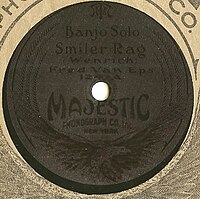
A phonograph, in its later forms also called a gramophone or since the 1940s called a record player, is a device for the mechanical recording and reproduction of sound. The sound vibration waveforms are recorded as corresponding physical deviations of a spiral groove engraved, etched, incised, or impressed into the surface of a rotating cylinder or disc, called a "record". To recreate the sound, the surface is similarly rotated while a playback stylus traces the groove and is therefore vibrated by it, very faintly reproducing the recorded sound. In early acoustic phonographs, the stylus vibrated a diaphragm which produced sound waves which were coupled to the open air through a flaring horn, or directly to the listener's ears through stethoscope-type earphones.

Phonograph cylinders are the earliest commercial medium for recording and reproducing sound. Commonly known simply as "records" in their era of greatest popularity, these hollow cylindrical objects have an audio recording engraved on the outside surface, which can be reproduced when they are played on a mechanical cylinder phonograph. In the 1910s, the competing disc record system triumphed in the marketplace to become the dominant commercial audio medium.
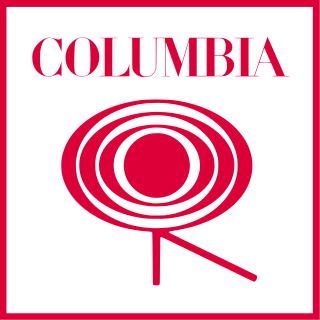
Columbia Records is an American record label owned by Sony Music Entertainment, a subsidiary of Sony Corporation of America, the North American division of Japanese conglomerate Sony. It was founded on January 15, 1889, evolving from the American Graphophone Company, the successor to the Volta Graphophone Company. Columbia is the oldest surviving brand name in the recorded sound business, and the second major company to produce records. From 1961 to 1990, Columbia recordings were released outside North America under the name CBS Records to avoid confusion with EMI's Columbia Graphophone Company. Columbia is one of Sony Music's four flagship record labels, alongside former longtime rival RCA Records, as well as Arista Records and Epic Records.

A phonograph record, or simply a record, is an analog sound storage medium in the form of a flat disc with an inscribed, modulated spiral groove. The groove usually starts near the periphery and ends near the center of the disc. At first, the discs were commonly made from shellac, with earlier records having a fine abrasive filler mixed in. Starting in the 1940s polyvinyl chloride became common, hence the name vinyl. In the mid-2000s, gradually, records made of any material began to be called vinyl records, or simply vinyl.

The Victor Talking Machine Company was an American record company and phonograph manufacturer headquartered in Camden, New Jersey.

Brunswick Records is an American record label founded in 1916.

Lyric Records was a record label based in the United States from about 1917 to 1921.

Pathé Records was an international record company and label and producer of phonographs, based in France, and active from the 1890s through the 1930s.

Edison Records was one of the early record labels that pioneered sound recording and reproduction, and was an important player in the early recording industry.
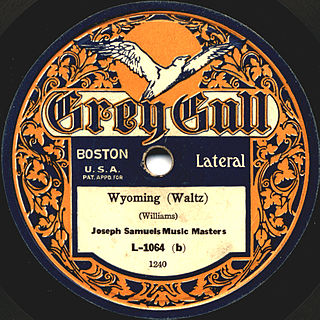
Grey Gull Records was a record company and label founded in Boston, Massachusetts in 1919. The company was started by Theodore Lyman Shaw, a member of a wealthy and prominent family from Wellesley, Massachusetts whose ancestors included Civil War hero Robert Gould Shaw.

Puritan Records was an American record label which lasted from 1917 to 1929. For most of its existence Puritan was a product of the Wisconsin Chair Company, which also marketed Paramount Records, but as a label, Puritan briefly predates Paramount and began with United Phonographs Corporation.
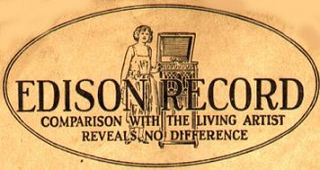
The Edison Diamond Disc Record is a type of phonograph record marketed by Thomas A. Edison, Inc. on their Edison Record label from 1912 to 1929. They were named Diamond Discs because the matching Edison Disc Phonograph was fitted with a permanent conical diamond stylus for playing them. Diamond Discs were incompatible with lateral-groove disc record players, e.g. the Victor Victrola, the disposable steel needles of which would damage them while extracting hardly any sound. Uniquely, they are just under 1⁄4 in thick.

The overwhelming majority of records manufactured have been of certain sizes, playback speeds, and appearance. However, since the commercial adoption of the gramophone record, a wide variety of records have also been produced that do not fall into these categories, and they have served a variety of purposes.

Odeon Records was a record label founded in 1903 by Max Straus and Heinrich Zuntz of the International Talking Machine Company in Berlin, Germany. The label's name and logo come from the Odéon-Théâtre de l'Europe in Paris.

The LP is an analog sound storage medium, a phonograph record format characterized by a speed of 33 1⁄3 rpm, a 12- or 10-inch diameter, and use of the "microgroove" groove specification. Introduced by Columbia in 1948, it was soon adopted as a new standard by the entire record industry. Apart from a few relatively minor refinements and the important later addition of stereophonic sound, it remained the standard format for record albums until its gradual replacement from the 1980s to the early 21st century, first by compact discs and then by streaming media.

Aretino was a United States record label, in business from about 1907 to 1914.

Angelophone was an early, short-lived record label from the United States with produced an unusual 7-inch, vertically-cut record.
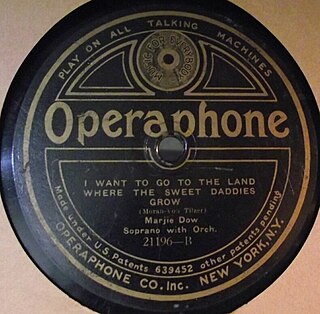
Operaphone Records was a record company in existence from 1915 until 1921, who released numerous phonograph records cut in the hill-and-dale and universal-cut methods.
Edison Bell was an English company that was the first distributor and an early manufacturer of gramophones and gramophone records. The company survived through several incarnations, becoming a top producer of budget records in England through the early 1930s until, after it was absorbed by Decca in 1932, production of various Edison Bell labels ceased.
Domino Records was a United States producer of early phonograph records. The company was originally named Empire Phonograph Corporation, but changed their name to Domino Phonograph Corporation in 1915, apparently before producing any products. The label debuted June 1916. They produced two-sided, 7-inch fine-groove vertical-cut disc records with a light-blue label and dark-blue lettering. Domino advertised their playing time as equal to that of a 10-inch disc. Playing time was actually around two-and-a-half minutes. The discs were marketed by two different companies; out of New York by the W.R. Anderson Company, and out of Dayton, Ohio, by the Thomas Manufacturing Company. Domino Records also made 7-inch pressings for other concerns, including Concert Records, Domestic Records, and Melodograph Recods. In February 1917 a 10-inch red disc was introduced by Domino.

